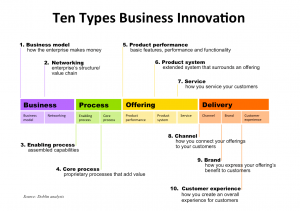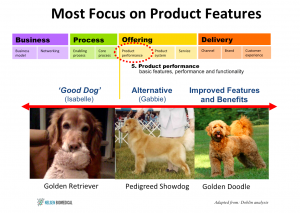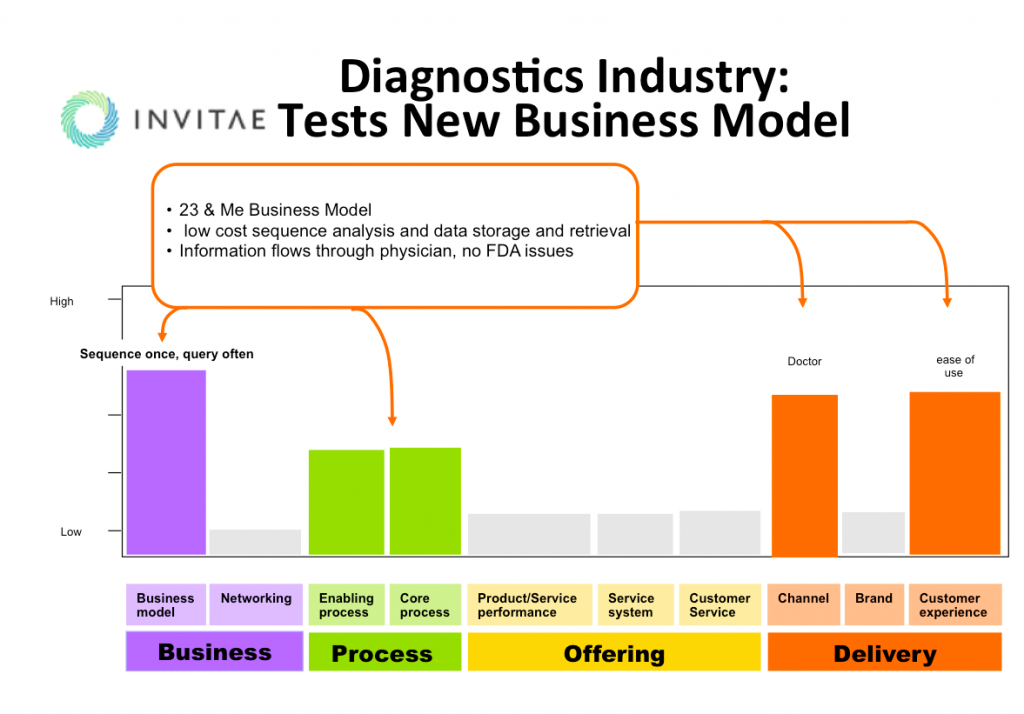We have talked in previously about what leads to success in business. Here I want to talk about the intersection of business success and innovation. Innovations in science and technology lead to new products, new companies, and whole new industries. Recombinant DNA technology sparked the biotechnology industry. Stem cell and iPS cells are pushing the emerging regenerative medicine industry forward. But scientific innovation can also be the smallest part of what makes a business successful. Innovation around the business can be what sets you apart. Here are three keys to successful business innovation.
First, innovation activity is often centered on the product itself when a focus on the other parts of the business model can actually create more value. Think about the entire value chain. Everything from the business model through the sales channel and customer experience are areas where you can differentiate your company. The Doblin Group has shown that though most of innovation efforts are focused on product features, most of the value creation for the business comes from innovation from other areas of the value chain.
Second, business opportunity should never be approached from a “product-first” perspective – it is the most common source of failure. A good example from outside life sciences is the car rental business. Most companies have been focused on gaining market share through the product offering. Hertz has a luxury car line for those who want to drive only the best, and Gold Members can walk directly to their reserved car at airports without having to wait in a line to finalize paperwork. Zipcar, however, competed in the “rental car” market via innovation throughout the value chain. The business model was “car sharing” via a low annual subscription plus a use fee. The initial target customers were city dwellers who needed a car by the hour or by the day, and for whom convenience (cars available within a five minute walk from any city location) and ease of use (no hidden charges, no check in or check out desks, cars equipped with toll-passes) made the experience as easy as owning your own car without the cost or hassles. The lesson here is Start at both ends of the value-chain and work inwards.
Last, the best source of successful business innovation is the application of ideas from other businesses, industries, anything. Steal ideas from everywhere. The concept of the drive through has been successfully used in businesses from fast food to liquor stores, wedding chapels and car washes.

In the life science industry an interesting example comes from looking at clinical diagnostics. Three diagnostic-based companies competing on technology platforms that were acquired recently include GnuBio, Primera Dx, and Genia. All provided different technology solutions for next-gen sequencing (NGS) or multi-modal options for clinical diagnostic. All addressed an issue in diagnostics, for example integrated workflow, multiple test types in a single tube, or high-throughput in sequencing. And while these appear to be examples of success, the industry is saturated with technology solutions and alternatives, and not all of these companies provided a return to the investors upon being acquired. But what about innovation outside of the product? Kathy Tune, of Thomas McNerney Partners said they spent three years looking for the right opportunity to invest in diagnostics. Like others, a focus in NGS was a criteria, as well as a product or service that did not require FDA approval. However, their key criteria was a novel business model. And they found that in Invitae whose model of ‘sequence once, query often’, reduced the cost of genetics-based diagnostics to payors, providers and to patients. In essence, Invitae repurposed 23andMe’s initial consumer-based business model of having the initial request pay for the cost of sequencing genetic information, while generating revenue on each additional request for information from existing data. In addition, by having the information requested and results shared through the patient’s practitioner Invitae avoids the time and cost of getting regulatory approval while avoiding getting in the crosshairs of the FDA as was the case with 23andMe.
Advances in science and technology are often the foundations of new companies and facilitate growth of existing businesses. But the key to success is through innovation in the entire value-chain of the business.
This is an excerpt from a presentation by @barbaranelsen for Bio-Techne‘s Innovation Day Symposium April 11, 2015. For the full presentation, contact us.







